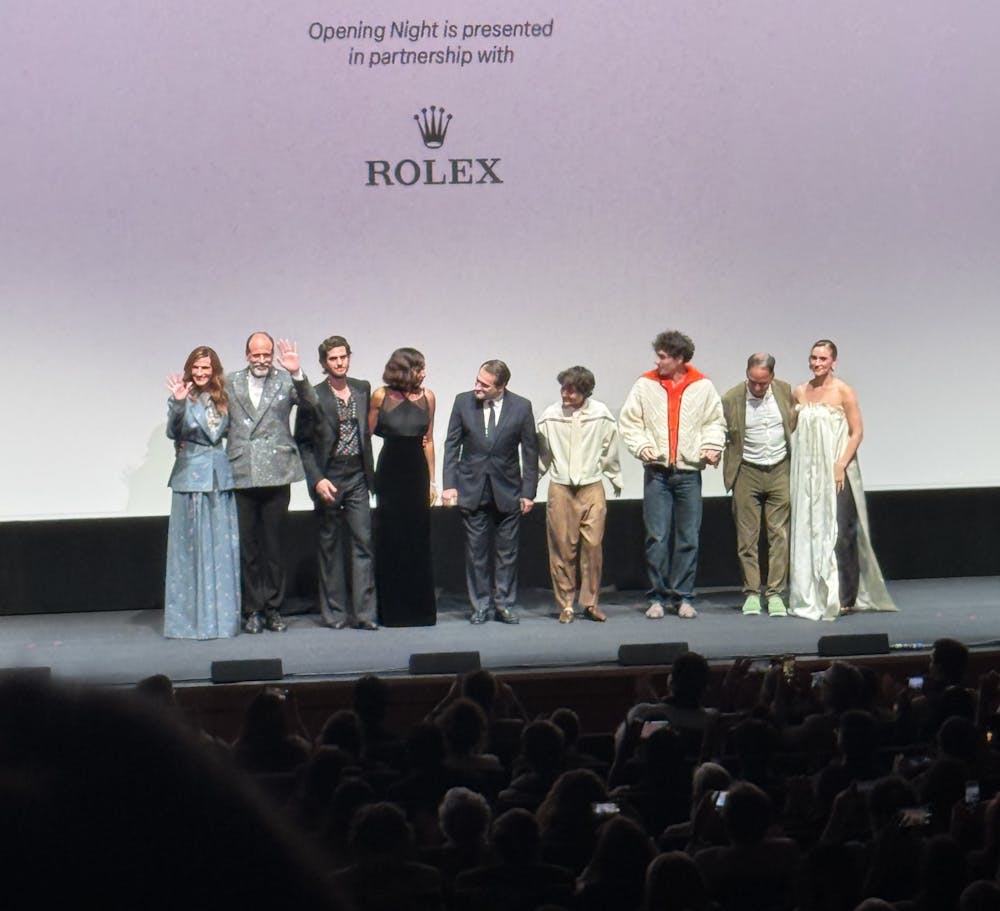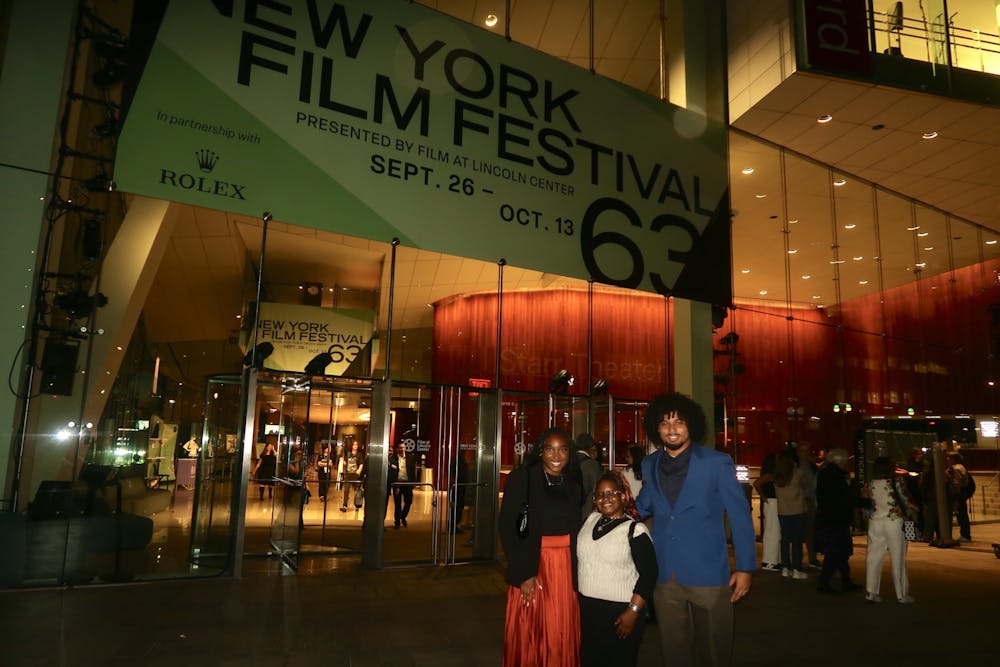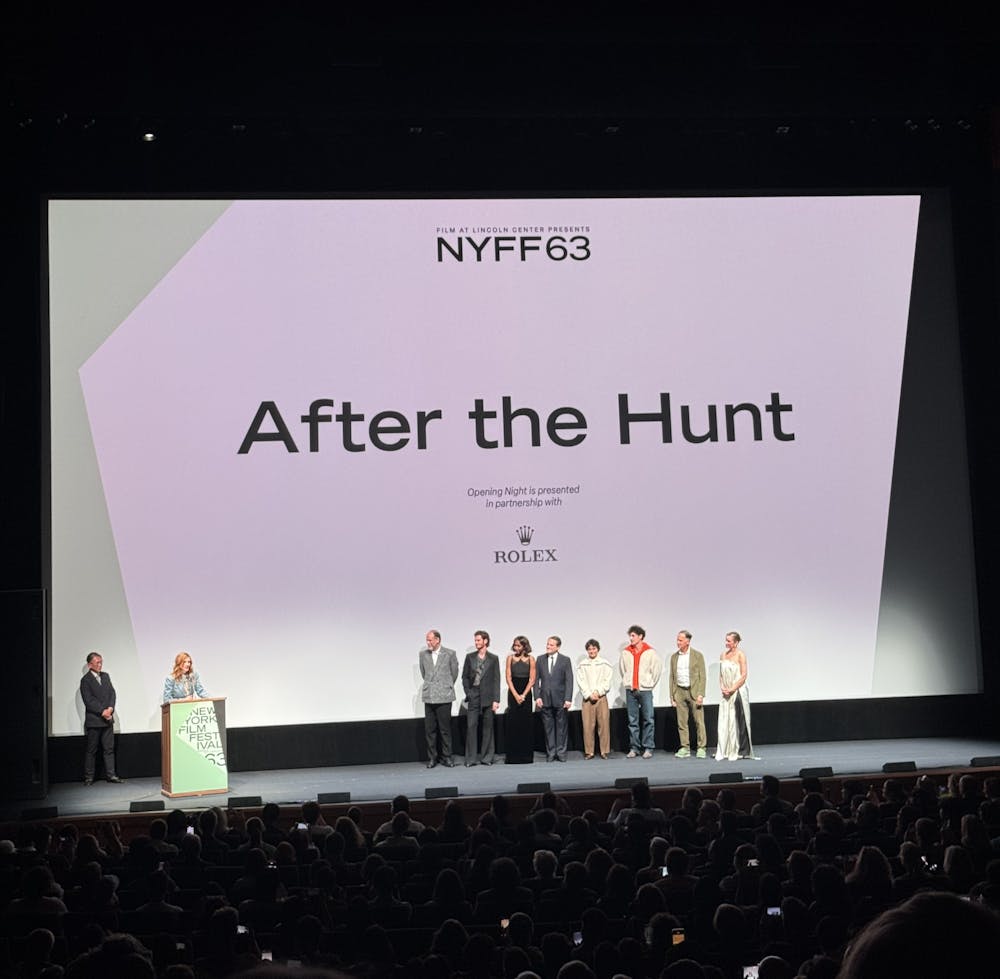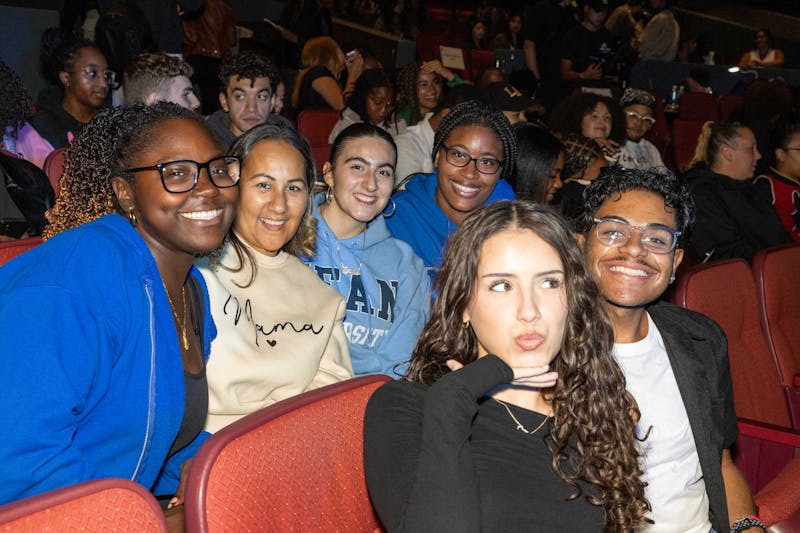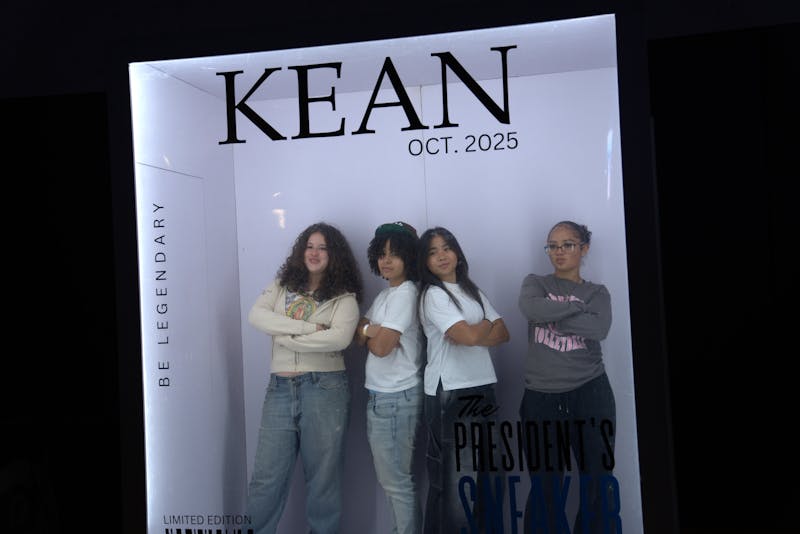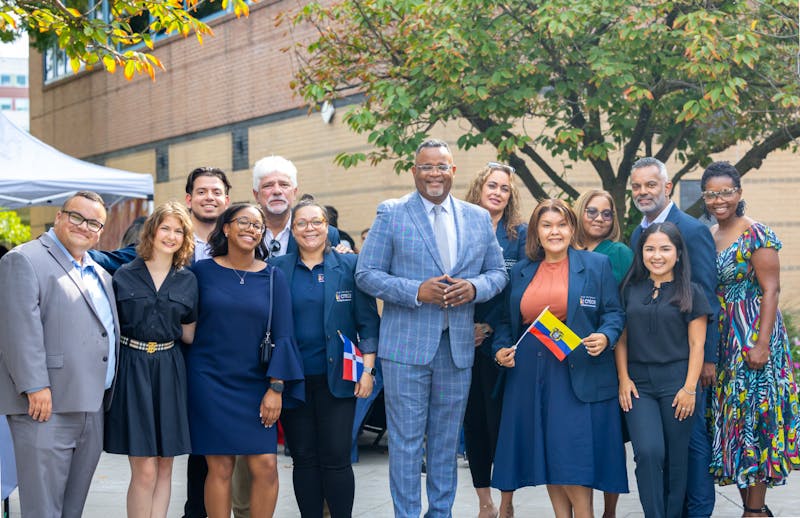"When did offending someone become the preeminent cardinal sin?." – Hank Gibson
Three of the Cougar’s Byte managers, Courtney-Joy Breeden, Melody Cadet, and Luis Sanchez-Garcia, were offered the opportunity to attend the New York Film Festival premiere and Roundtable for the upcoming movie ‘After the Hunt,’ starring Julia Roberts, Ayo Edebiri, and Andrew Garfield in Alice Tully Hall at Lincoln Center . It was one of the most memorable nights of our lives that partially belongs to the world of cinema and one of its many outstanding directors, Luca Guadagnino.
Luca Guadagnino—who is responsible for movies like Challengers (2024) and Call Me by Your Name (2017)–brings to life the complexities and tensions of life in academia, written by rising creative Nora Garett, in a more-than-theatrical way.
The film follows Yale philosophy professor Alma Olsson — played by seasoned actress Julia Roberts — who finds herself caught in a twisted turn of events after hosting a teacher-student inclusive soirée at her home. Although the story centers on Olsson, much of the actual conflict stems from her colleague and prize student, Hank, and Maggie, portrayed by Andrew Garfield and Ayo Edebiri. Maggie accuses Hank of sexually assaulting her after the party, and Alma is unclear on how to go about the situation due to her own experience, which we learn later in the story.
It begins like an opening number, with a jumble of academic jargon and wine glasses, and immediately, the relationships between the three lead characters are established. As Hank and Maggie engage in a passionate conversation about generations and sins, Alma moves from being a simple observer to sitting between the two, with Hank on her left and Maggie to her right. Shortly after, when Maggie excuses herself to the restroom, Alma points her in the direction of a bathroom further into the house.
The scene foreshadows her actions and choices throughout the remainder of the film, revealing her inner struggle between her desire to maintain her bond with Hank and her obligation to create a space of comfort and support for Maggie.
For two hours, the film tiptoes around the characters, leaving the audience wondering what exactly just happened. But that’s just it; the movie isn’t only about the characters; it's more of an observation of people and how they interact with each other when tragedy strikes.
Alma becomes a mess of misery as the plot unravels, always so sure, and then ends up right back on the brink of uncertainty. Her view of reality is terribly skewed, but she’s extremely observant and clever. Maggie takes on many of the same characteristics as Alma; that fact is rather unsurprising, as she looks up to Alma and mirrors many aspects of her life. But where Alma is an emotional wreck haunted by her past, Maggie becomes confident and sure of herself, like a baby bird first learning to fly; she soon no longer needs Alma’s shoulder to cry on.
Julia Roberts as the fierce, adored, and troubled professor reflects the standards society has for women in roles of authority, and Ayo Edebiri leans into the role of an ambitious, approval-seeking young woman struggling to find her place in a less-than-nurturing world. But Andrew Garfield as Hank is a change of pace.
Hank is a pretty vague character; we know nothing about him besides where he works, his relationship with Alma, and that he’s been accused of sexual assault by Maggie. The charming and confident character is the only solid antagonist of the story, something a bit different for America’s neighborhood Spider-Man, and Garfield plays it well.
The performances of each are all too reminiscent of the theater rather than the controlled, practiced result of doing take after take on a film set, which is partially due to Guadagnino’s affinity for getting scenes done in one intense take.
Alma’s groaning as she hugs herself in pain, Maggie’s hands when she physically tries to map out her words, and Hank’s destructive agitation with the subject of the plot line resemble the theatrical methodologies of Constantin Stanislavsky, Stella Adler, and Sanford Meisner, techniques that are becoming less apparent in modern film.
It is the creative minds of Guadagnino and cinematographer Malik Hassan Sayeed, combined with the technical performance of the actors, that make the film's purpose clear.
The movie is a form of morality play and opens a discussion on what is right and wrong. Alma represents us all, the part that believes victims first, and the other half that clings to a connection with another person, regardless of their wrongdoings. She sets out on a path of self-reflection where she must decipher what is fair and acceptable, and what characteristics decide that.
The movie is more than a #MeToo, #BlackLivesMatter, DEI film but it explores the concept of identity and pairs it with what is ethical and moral in the face of adversity. What is right or wrong? Do we believe the rich Black and queer scholar or the hardworking and likable White male professor?
Check out 'After the Hunt' in theaters this month, starting October 10th and see where your moral compass leads you.


